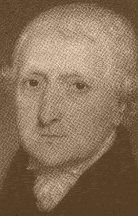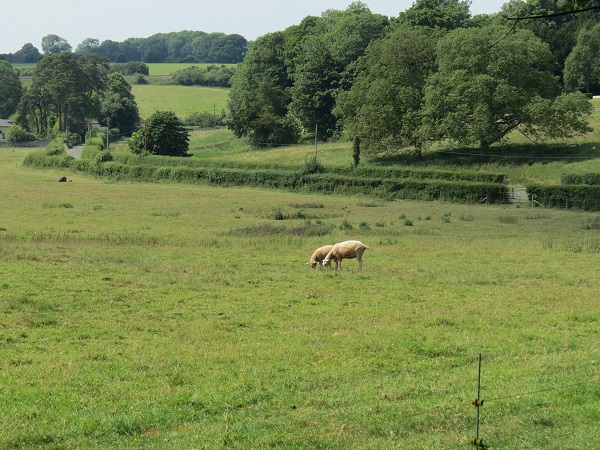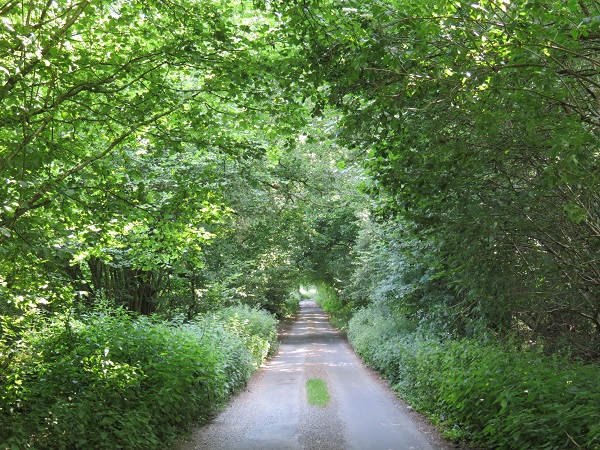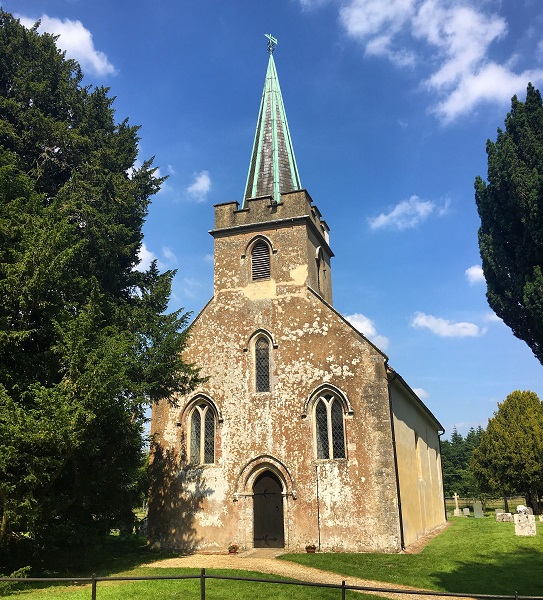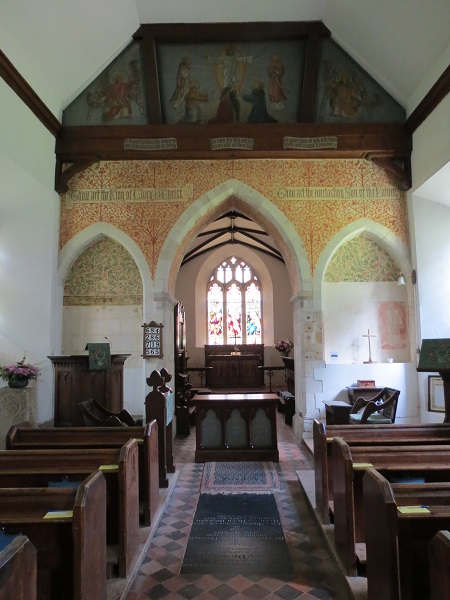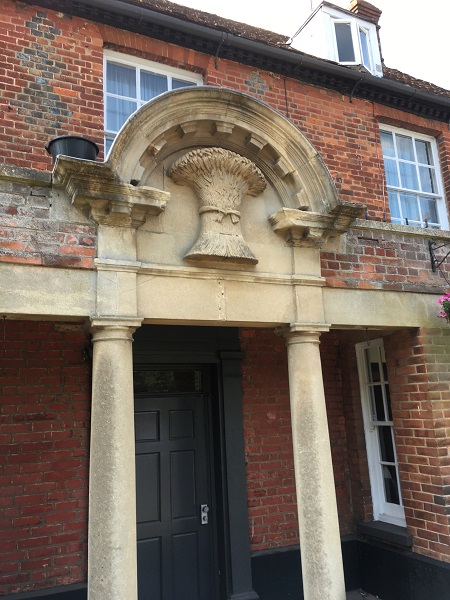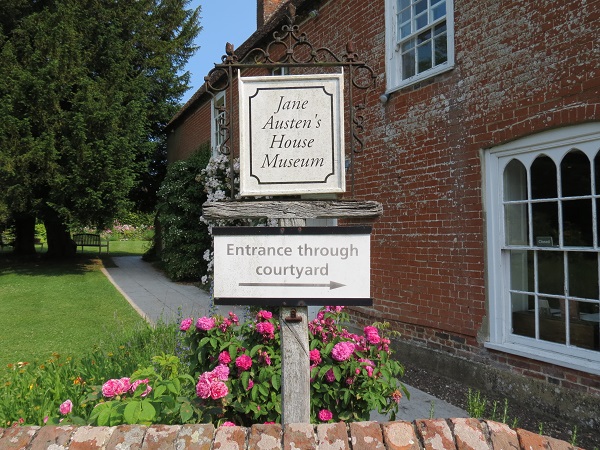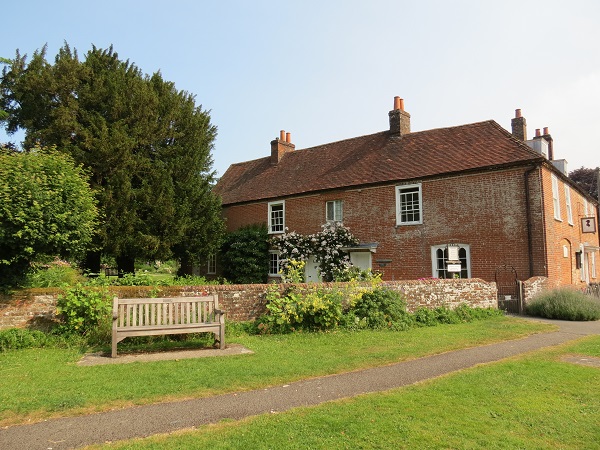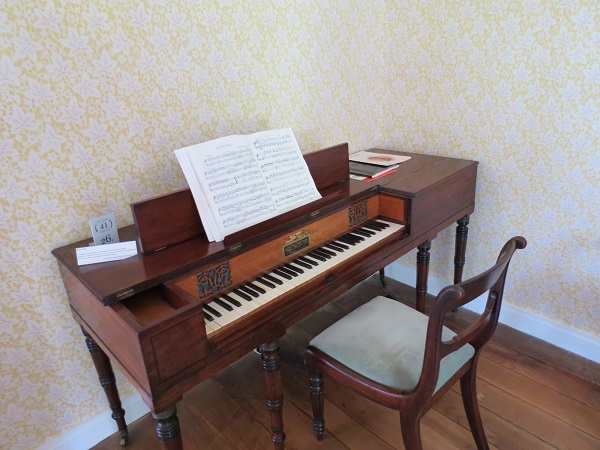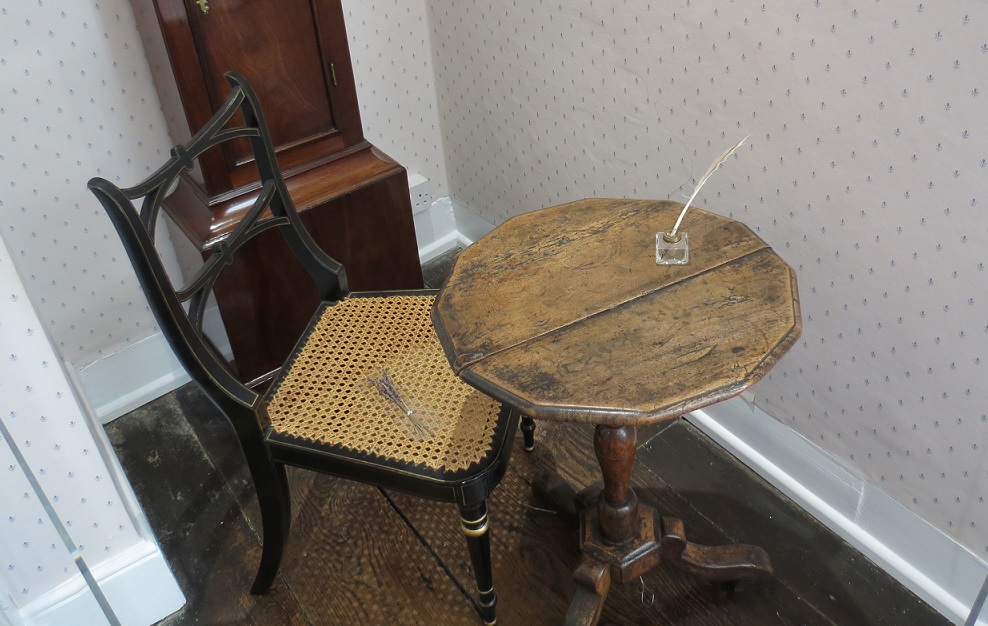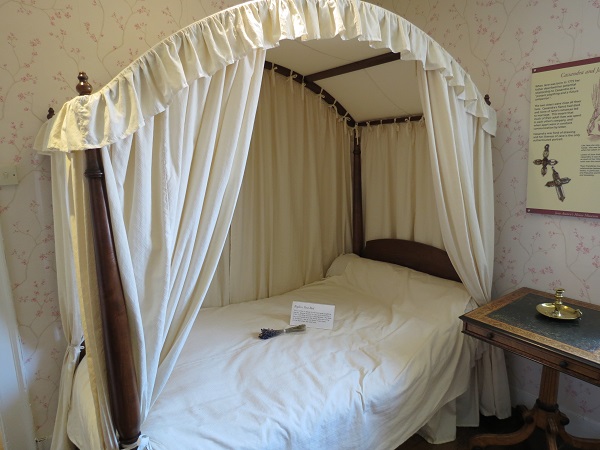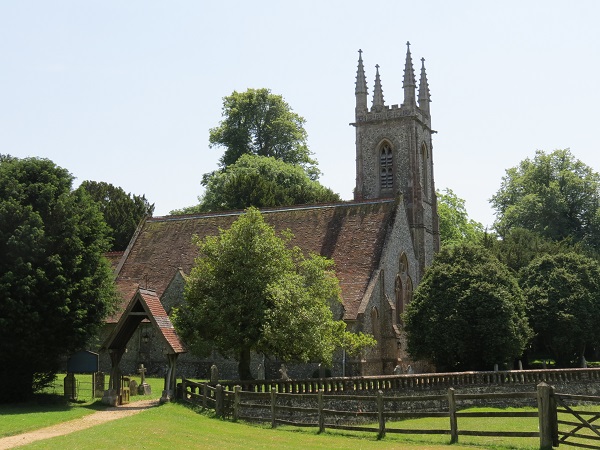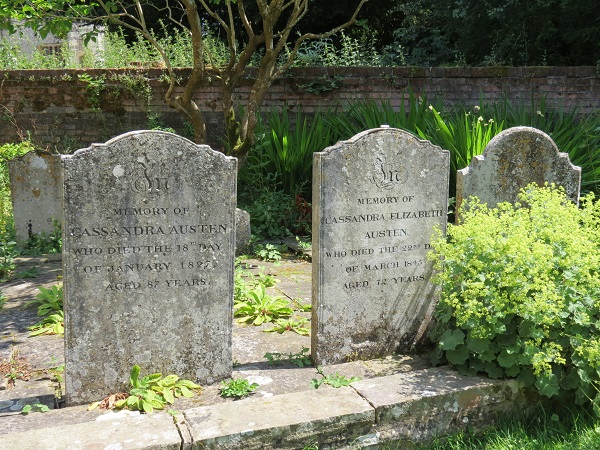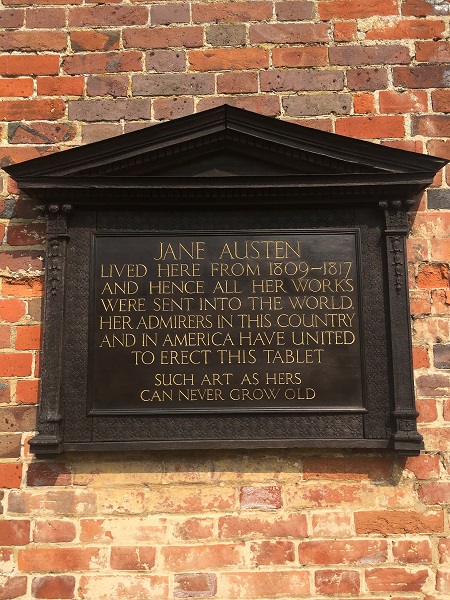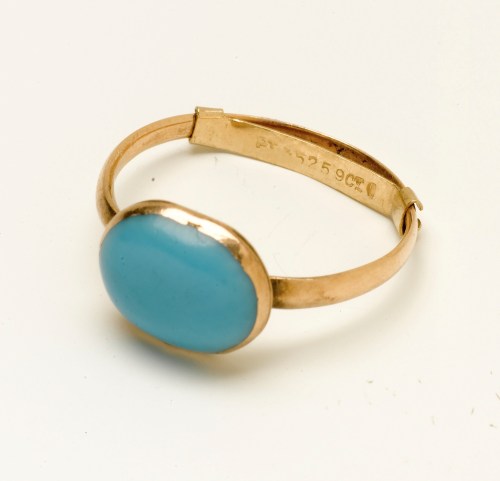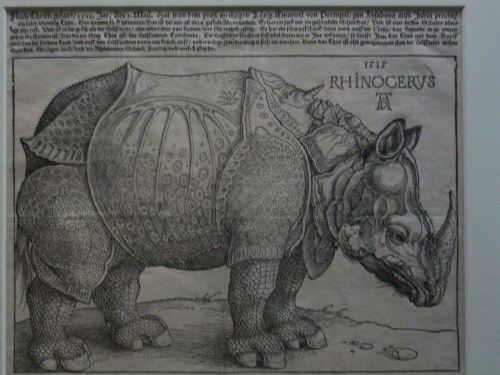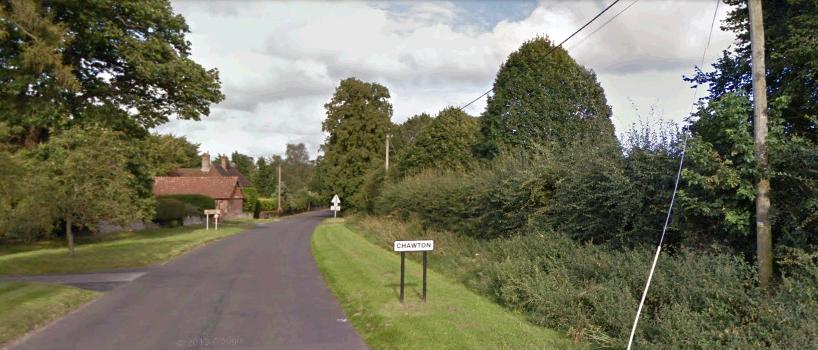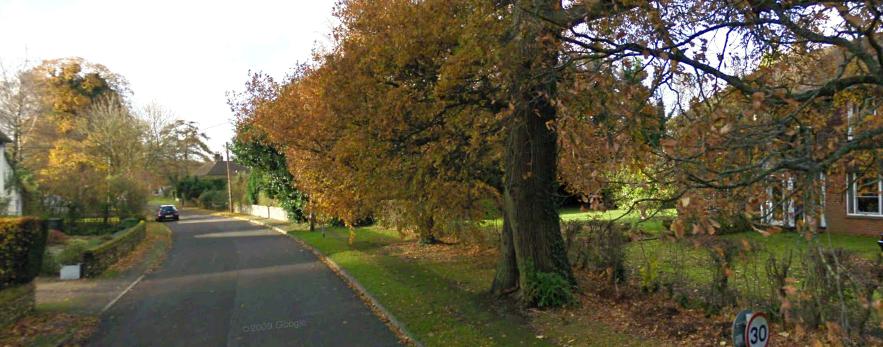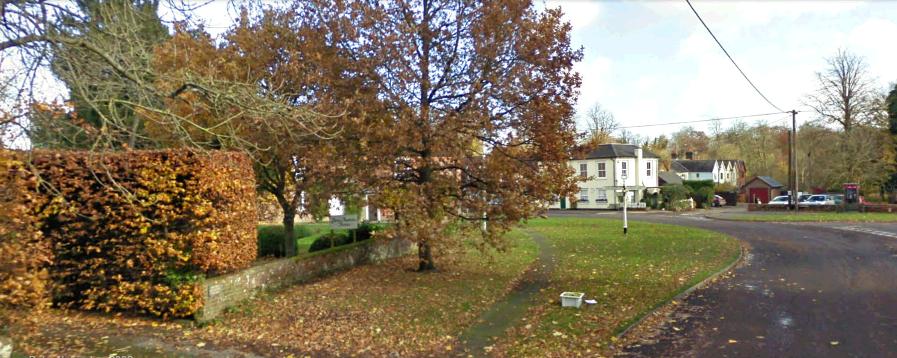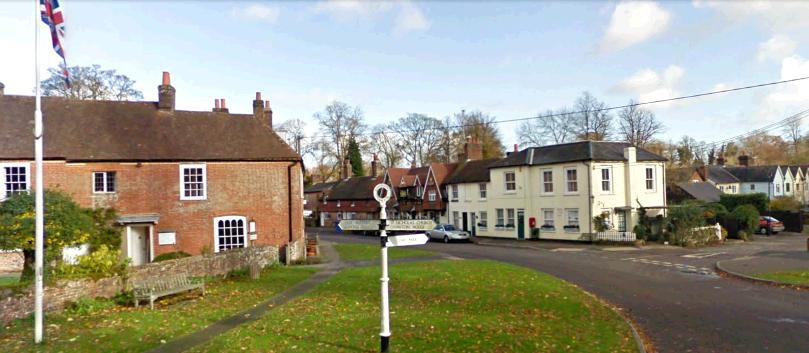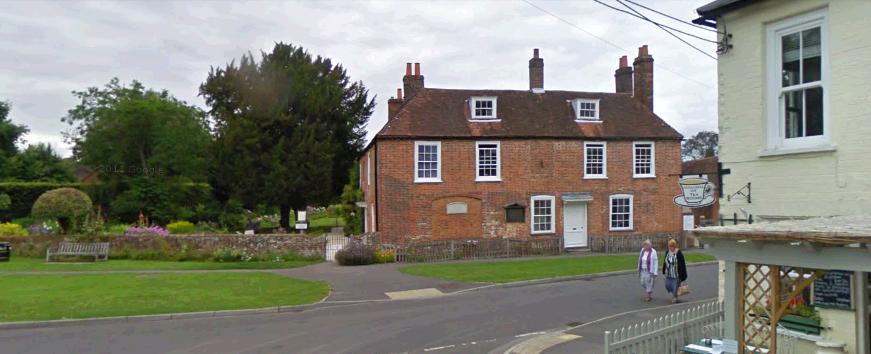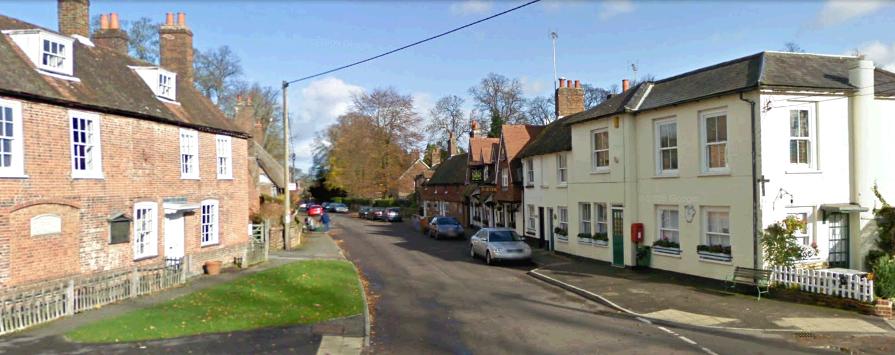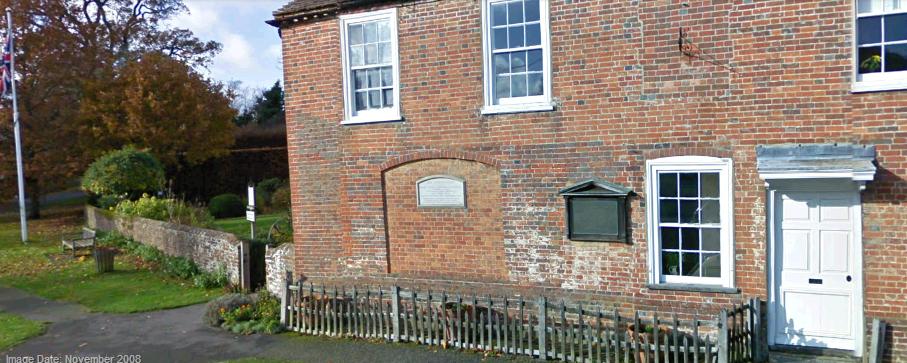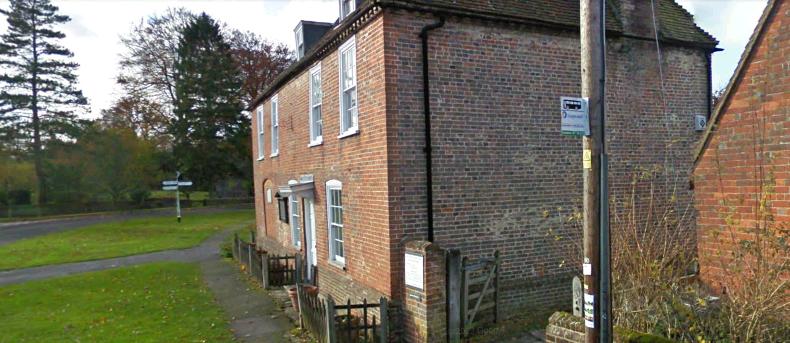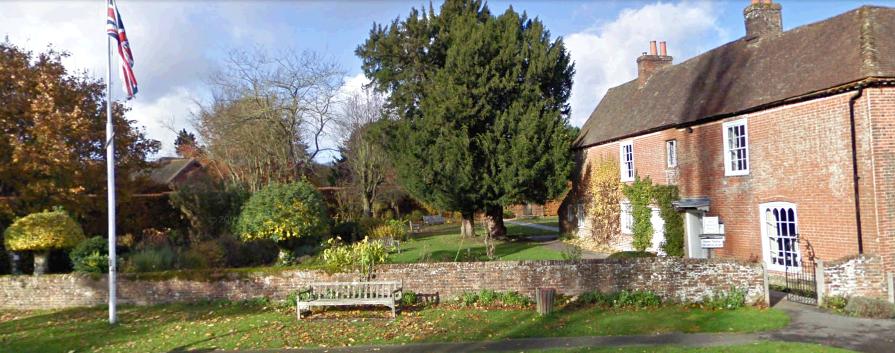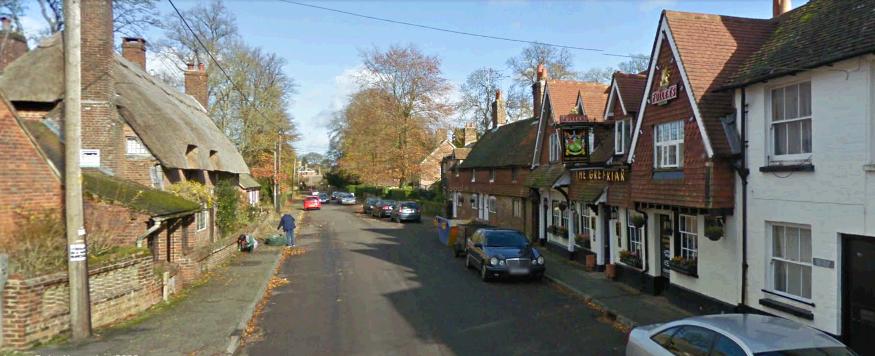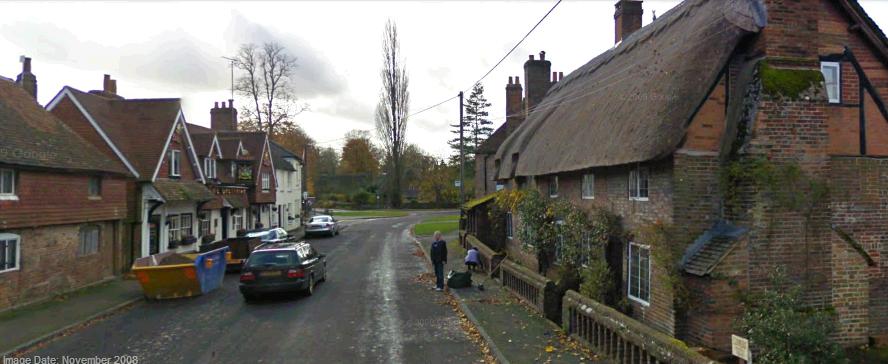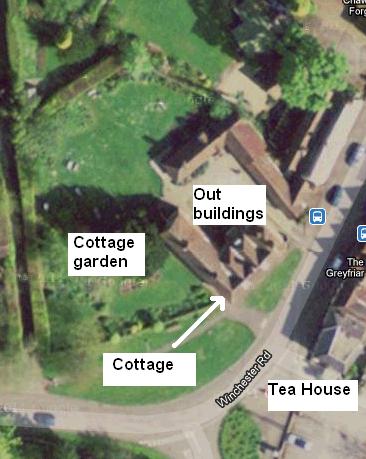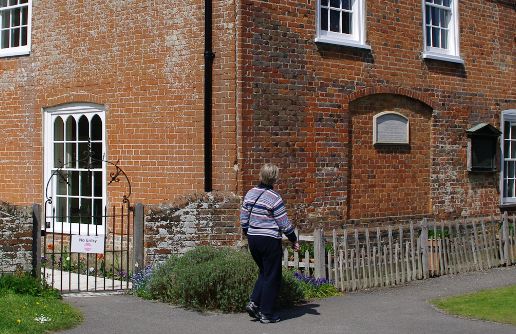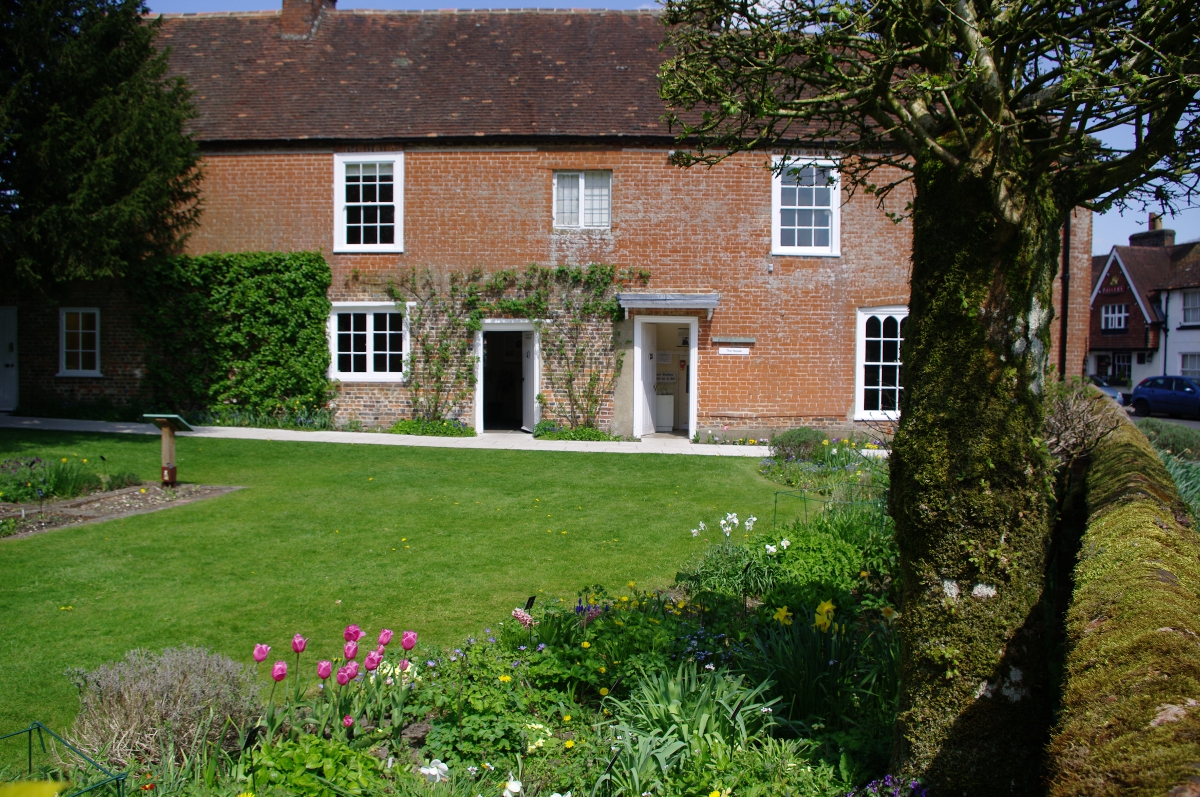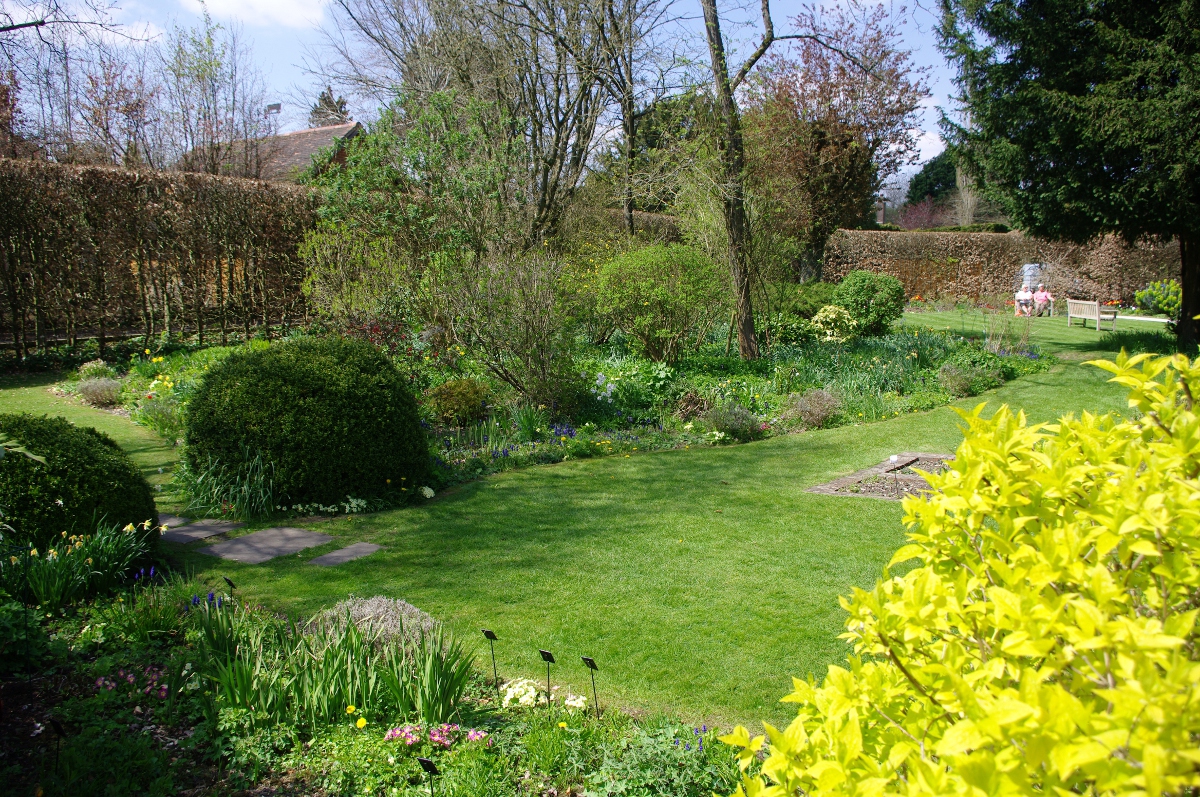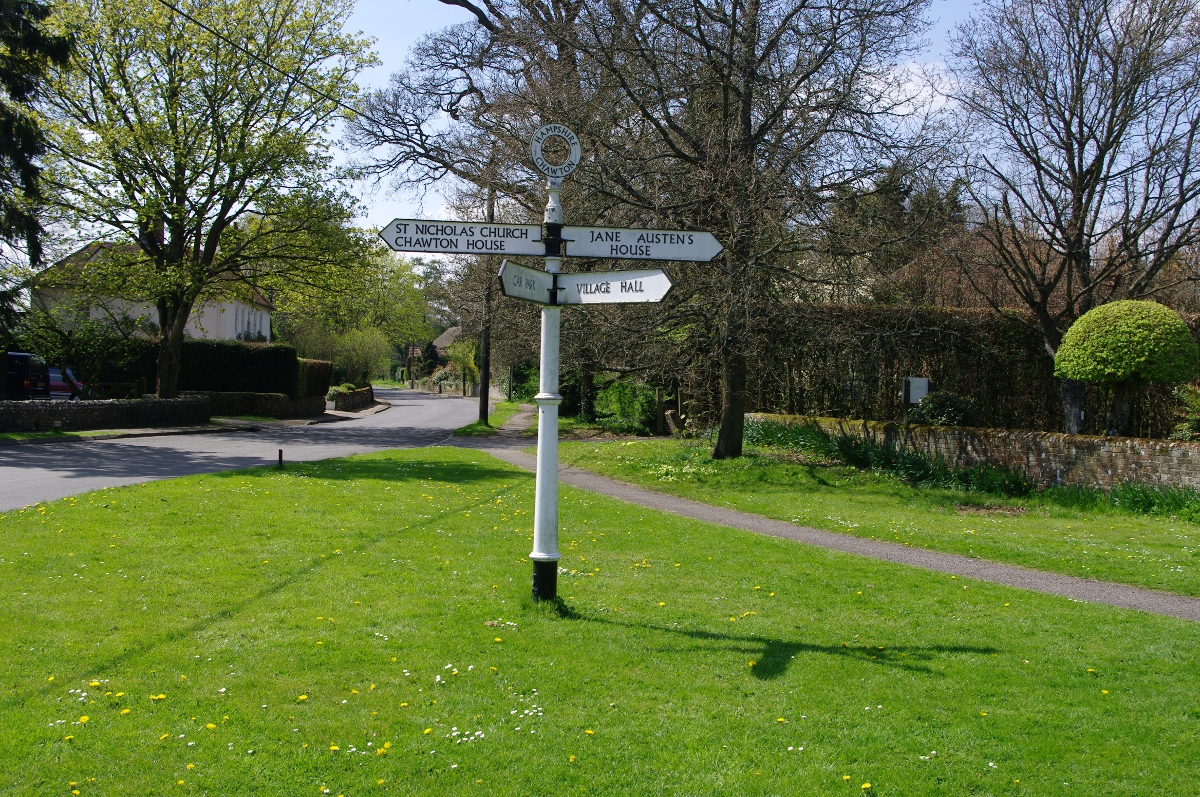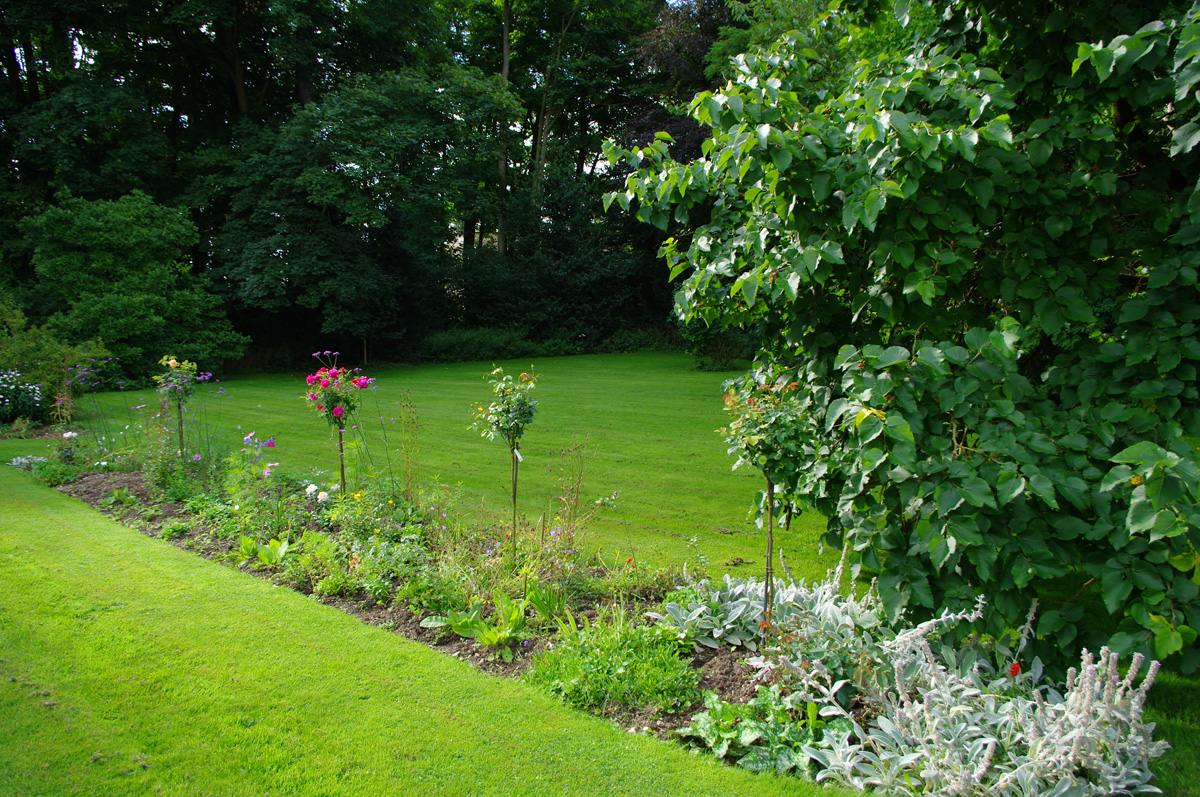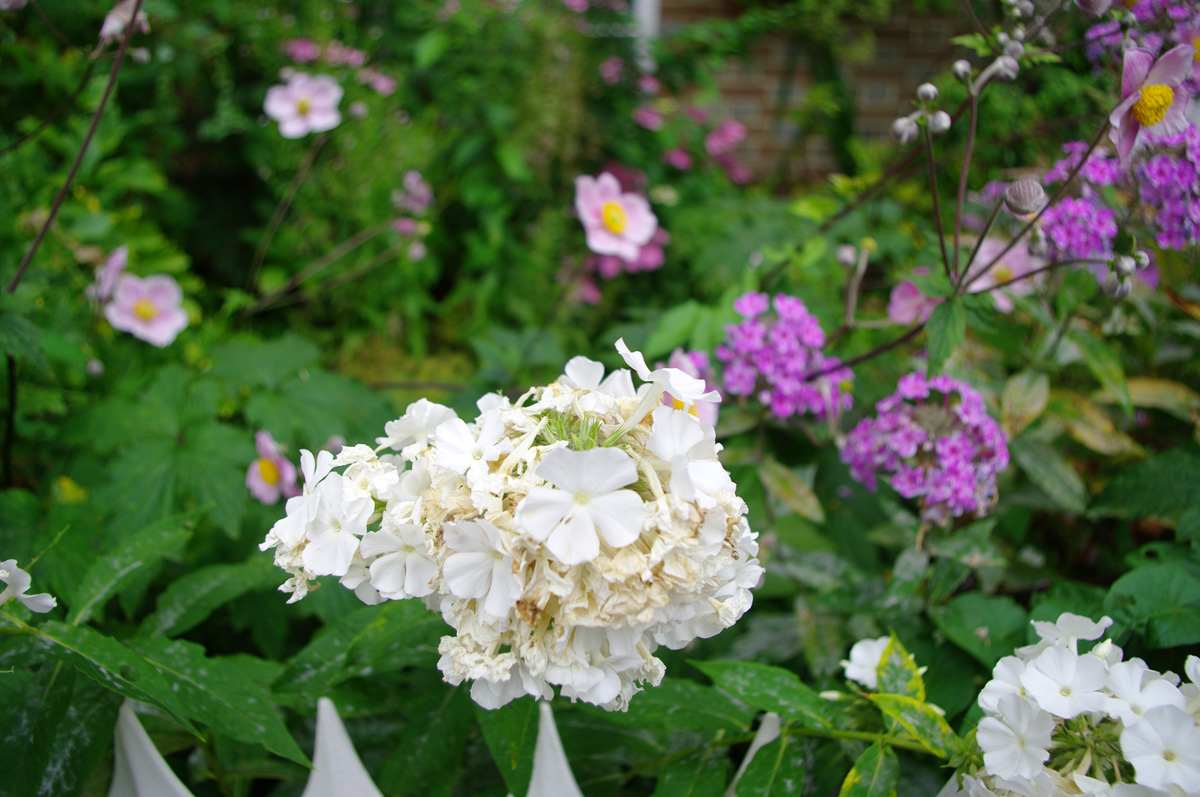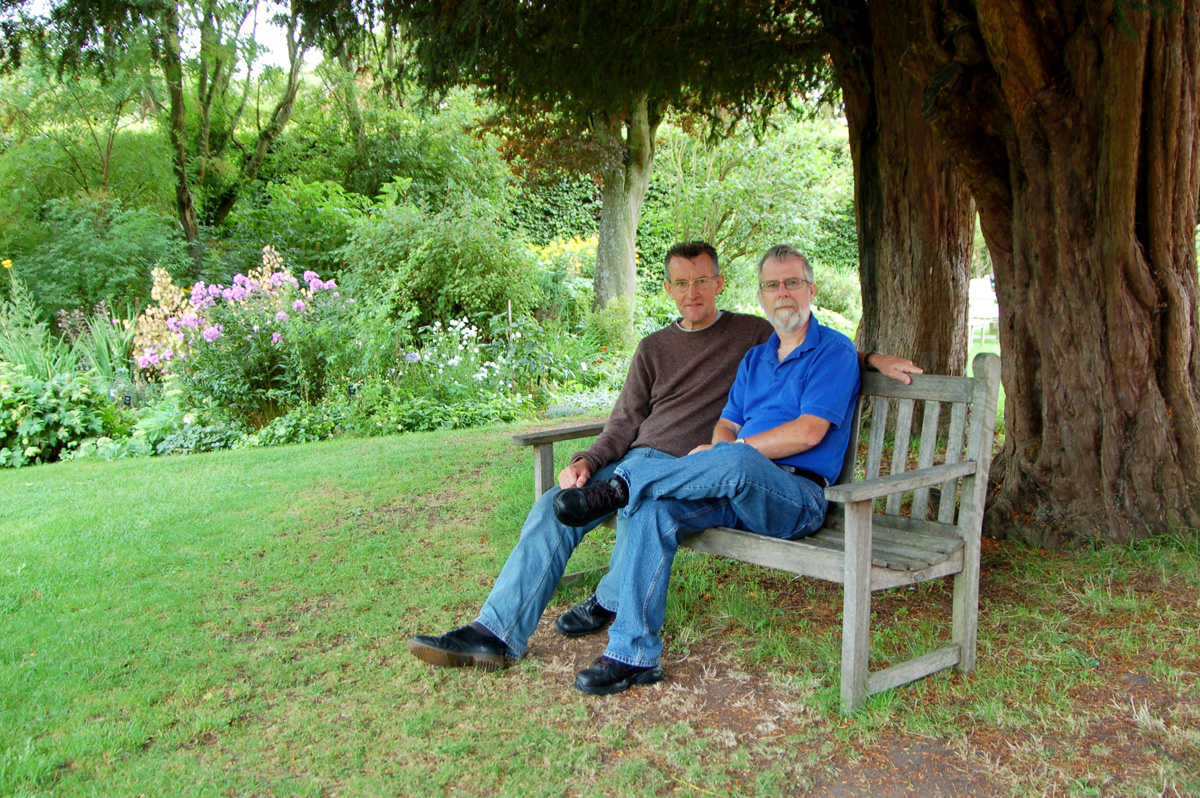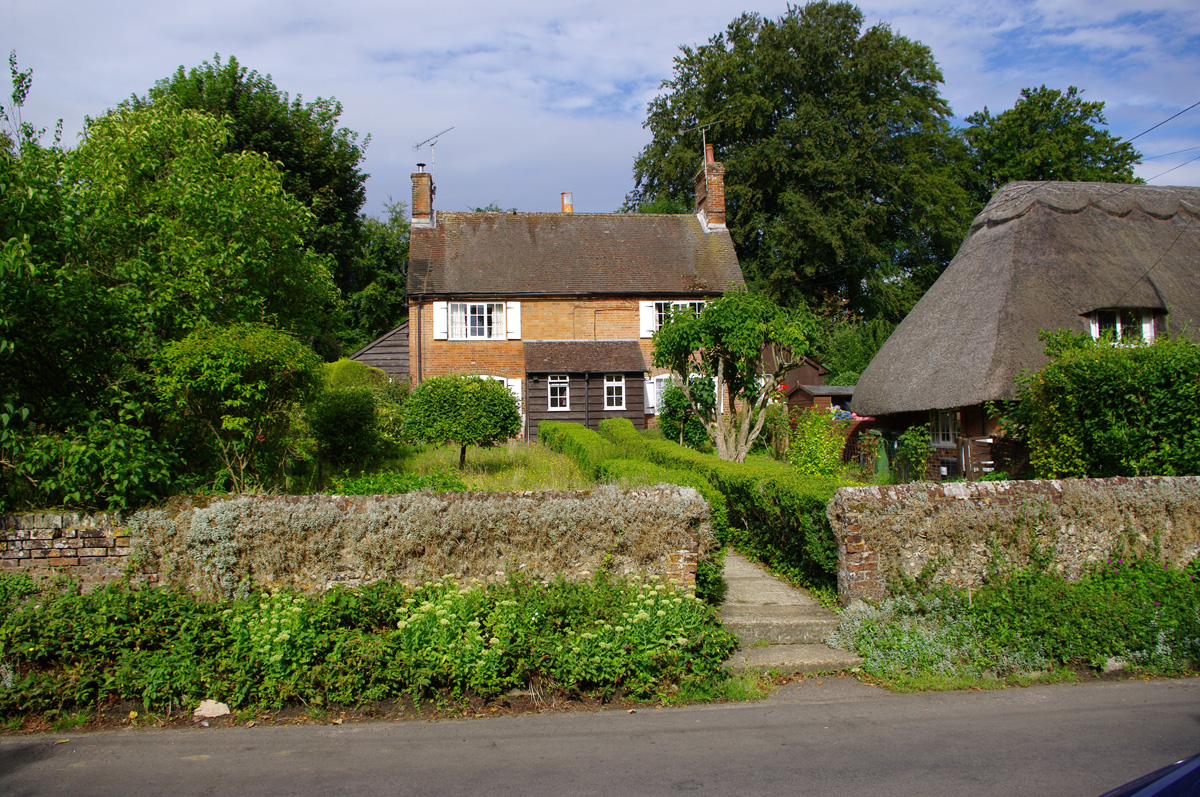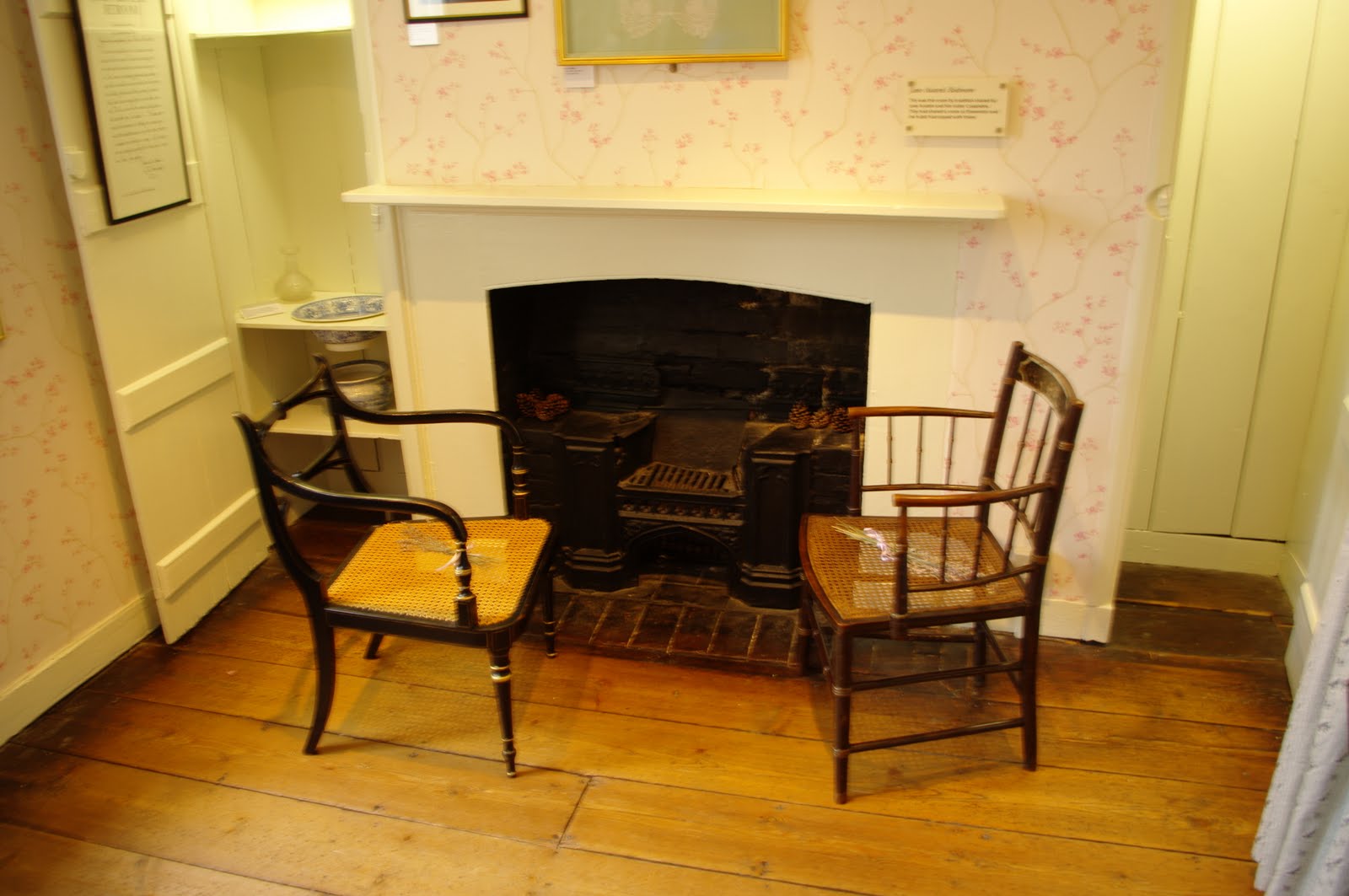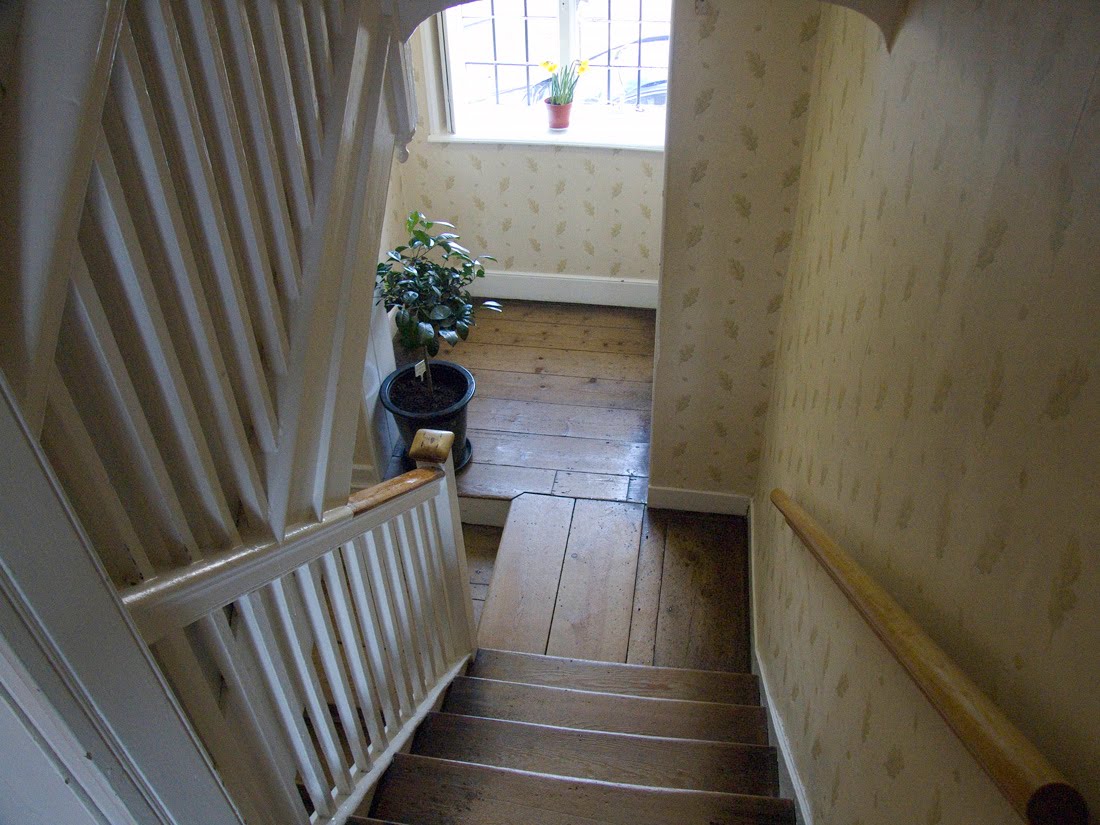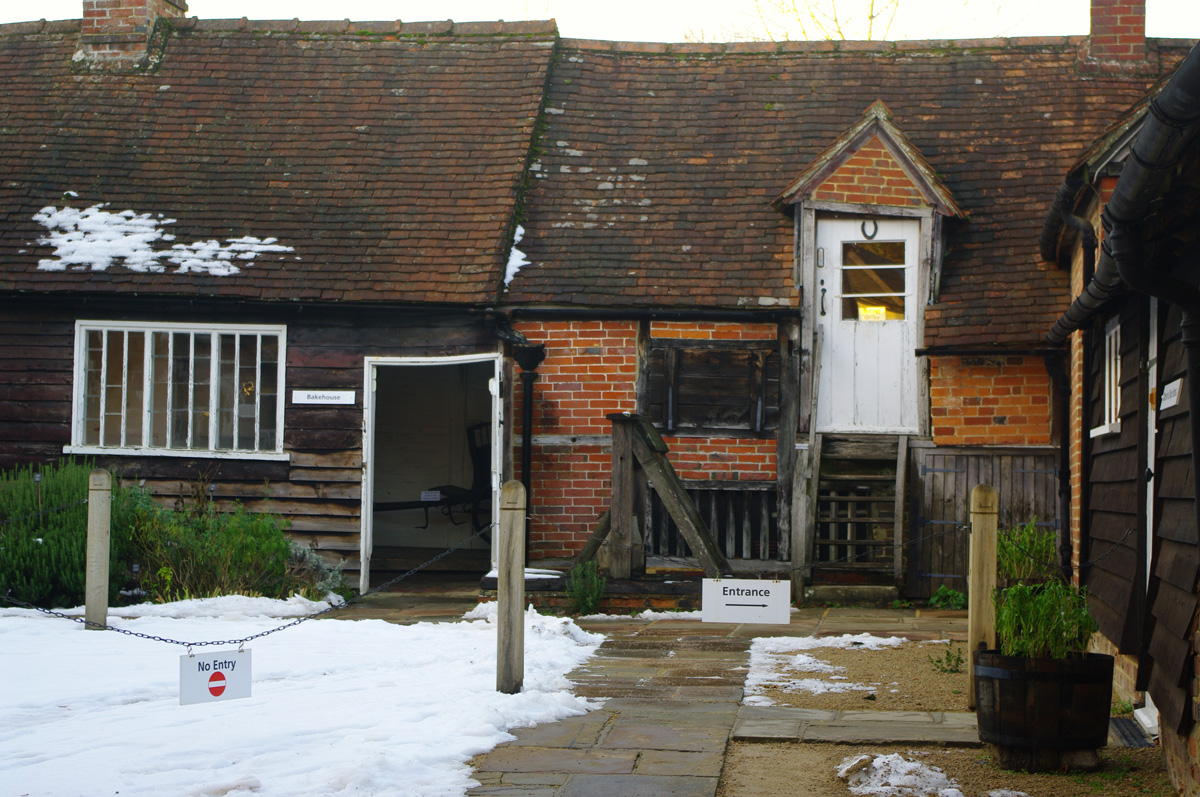Inquiring readers: WordPress has changed its editor, and I am still wrestling with the changes, especially on different computers – Mac and Android. You can see it in the changes in spacing and font. I am also experiencing internet connectivity problems. For these reasons, this post is published 4 days later than I intended. When we celebrated Father’s Day in the U.S., I thought of my beloved father and of his dry wit, which influenced my love for Austen and her novels (especially of Mr Bennet’s comments in Pride and Prejudice that reminded me of my father’s droll, but gentle humor). As I pondered the connection, I asked: “How did Jane Austen’s father influence her writing?” Here is my very short analysis.
Jane Austen was born on December 16th in 1775 on a bitter cold day in Steventon, a village in Hampshire. One day after her birth, her father, the village’s pastor, wrote a family member about his 7th child (out of 8) and second daughter:
“You have doubtless been for some time in expectation of hearing from Hampshire, and perhaps wondered a little we were in our old age grown such bad reckoners but so it was, for Cassy* certainly expected to have been brought to bed a month ago: however last night the time came, and without a great deal of warning, everything was soon happily over. We now have another girl, a present plaything for her sister Cassy** and a future companion. She is to be Jenny…” (Lane, 63). (*His wife, Cassandra; **His daughter.)
One senses a father’s pride in the tone of this letter, as well as George Austen’s pleasure that Cassy, the only girl among his six children, and almost three years older than *Jenny*, would have a sister as a playmate.
Reverend George Austen baptized his new daughter on December 17th in his home, as he had done with his other children. While Mrs Austen rested during her lying in, he wrote notes announcing the birth to friends and acquaintances. As far as we know, this was the last time that he called his newborn Jenny. On April 5th, baby Jane was formally christened in St. Nicholas church. She was named after her godmother; her two aunts – Mrs Cooper and Mrs Leigh Perrot – and her maternal grandmother.
Despite the high infant mortality rate during this era, the Austens sent their babies to “a good woman at Deane” three months after their births. This custom was commonly practiced at that time. Cassandra Austen visited her babies daily in the nearby village, until they returned to the family fold at around 18 months of age. The reasons for this custom can be found in the following article on Breast Feeding in the Early 19th Century on this blog.
A loving father and mother:
George and his wife were equally hard working parents who provided a stable and often joyful childhood for their children, except perhaps for the physically disabled George, who might have suffered from epilepsy. (His condition is more fully discussed in this article by Geri Walton: Jane Austen’s Disabled Brother George Austen.
Early childhood and an education at home
Once the infants were returned to Steventon Parsonage, the parents took over raising their children. By all accounts, the Austen family was close-knit. After baby Jane’s return to the family fold, her parents’ teachings and examples during her formative years modeled intellectual, creative, and practical activities in a comfortable home and rural setting.
“She was apparently a tomboy as a child, preferring to play cricket and roll down hills with her brothers than play ‘girls’ games, much like the character of Catherine Morland in Northanger Abbey.” (Ivins, p 2.)

Mrs Hurst Dancing book cover from Amazon books. The image shows a family of 8 dancing inside a drawing room, with the carpets rolled up.
Many facts exist about the timeline of Rev George Austen’s life, but what was his relationship with his family, and, in the interest of this article, with his famous daughter? From an early age, George Austen led a hard-scrabble life. He lifted himself up through extraordinary intelligence and industry.
Young Jane and her sister learned about history, literature, and the classics from their father and brothers. George’s library consisted of 500 volumes, an enormous (and expensive) number for a mere country parson. Shades of Mr Bennet! The library contained both classical books and novels, the latter of which were first frowned upon by academics and traditionalists, but were read with enjoyment by the Austen family.
“…most of [the sisters’] education was undertaken privately at home, where their father, Reverend George Austen, supplemented his clerical income by taking boy pupils as boarders. It is likely that the Austen sisters benefited from their father’s library and from his informal instruction. We do not know whether or not they also sat in on any of the boys’ classes.” – Sutherland, British Library
Boarding school and “formal” education:
Jane and Cassandra acquired some formal education, although there were no expectations that their education would be as rigorous as their brothers’.
“In 1782 at the age of 7 Jane Austen went to school for the first time. Theories [conjecture] that she wanted to go to school because her elder sister Cassandra was being sent to Mrs Cawley’s school in Oxford to accompany their cousin Jane Cooper who was being sent there.” – Jane Austen Went to School
In 1783, Jane, Cassandra, and their cousin Jane Cooper caught an infectious disease spread by troops returning to Southampton. The three became quite ill. Jane Cooper sent a letter about the situation to her parents, who informed the Austens. Alarmed, Mrs Austen and Mrs Cooper immediately traveled to the school to retrieve their daughters. Mrs Austen nursed Jane back to health, but sadly Mrs Cooper caught the disease and died from it.
In the following three years, Jane and Cassandra continued their education at home. Then, when Jane was ten, the girls set off again to school, one that seemed similar to Jane’s description of Mrs. Goddard’s school in Emma:
“Mrs. Goddard was the mistress of a school — not a seminary, or an establishment, or anything which professed, in long sentences of refined nonsense, to combine liberal acquirements with elegant morality, upon new principles and new systems — and where young ladies for enormous pay might be screwed out of health and into vanity — but a real, honest, old-fashioned boarding school, where a reasonable quantity of accomplishments were sold at a reasonable price, and where girls might be sent to be out of the way, and scramble themselves into a little education, without any danger of coming back prodigies. Mrs. Goddard’s school was in very high repute, and very deservedly; for Highbury was reckoned a particularly healthy spot: she had an ample house and garden, gave the children plenty of wholesome food, let them run about a great deal in the summer, and in winter dressed their chilblains with her own hands.”
The school Jane and Cassandra attended between the spring of 1785 and December of 1786 was the Abbey School in Reading (remarkably still a girl’s school today https://theabbey.co.uk), where the curriculum included writing, spelling, French, history, geography, needlework, drawing, music and dancing – subjects that were considered essential for a girl’s education during the girls’ formative years to prepare them for attracting a husband and running a household. Few roads for women in Austen’s time led to higher education, travel abroad, or a career.
Unlike most of their female contemporaries, Jane’s and Cassandra’s education did not stop when they returned to Steventon. In fact, they were exposed to a wider variety of topics, subjects, and intellectual skills than they would have encountered in boarding schools. In addition:
“[Jane] was not denied “unladylike” material; she mentioned Henry Fielding’s bawdy novel Tom Jones in one of her letters and wrote that the Austen family were “great novel readers and not shamed of being so.” – Sullivan, (p180).
Early writing
Jane wrote her Juvenilia between 12 – 18 years of age as “gifts to her family” (Ivins). She frequently read these short, hilarious pieces of fiction to her siblings, parents, and friends. An early draft of Pride and Prejudice (First Impressions) was a particular favorite of her audience and remained so for years. Importantly, Rev. Austen encouraged her writing. In later years Cassandra recalled Jane reading from Elinor and Marianne (later Sense and Sensibility) before 1796. These carefree times in the Austen family’s social lives were filled with laughter, games, riddles, plays, readings, and intellectual discussions.
“…the relationship of Jane Austen with her own father seems, from what remains of her correspondence, to have been a good one. John Halperin characterizes him as a gentle, scholarly man, a good teacher and an excellent classical scholar. It was he who gave his daughter her literary education, and he who took sufficient interest in her work to offer her first novel to a publisher.” (Gibbs).
Despite their loving relationship, Austen’s six major novels described deeply flawed fathers with a variety of issues: Sir Walter Elliot was a snob and a spendthrift (P); Mr Woodhouse was a fearful hypochondriac whose neediness bound his youngest daughter to their home (E); General Tilney, another snob, was a truly nasty man all around (NA); and Mr Henry Dashwood (SS) left the financial fate of his second wife and daughters to the mercy of his weak-willed son and heir for lack of planning and foresight.
Sir Thomas Bertram’s fathering skills in Mansfield Park were more nuanced. While he wasn’t a model father, his understanding and insights changed. The growth of his character is one of many reasons why Mansfield Park is considered by many to be Jane’s masterpiece.
I have reserved Mr Bennet (PP), for last. When I was fourteen his character delighted me – his witticisms, his criticisms of his silly wife and three younger equally silly daughters, and his close relationship with Jane and Elizabeth, who I adored, all had my approval. But then I grew up and saw him in a different light.
In my mature years I saw a man whose wit and sarcasm hid an underlying cruelty. He was a husband who made fun of his wife; who favored two daughters above three others; a man who bought extremely expensive books, but who failed to set a portion of that expense aside for future investments for his wife and daughters. I now see a man who retreated from daily reality and, for all his intellectual curiosity, was generally lazy.
Even after Mr Wickham compromised his daughter, Lydia, and after Mr Darcy did everything in his power to rectify the situation, including providing the shameless couple with a yearly income, Mr Bennet quipped to Elizabeth:
“I admire all my three sons-in-law highly,” said he. “Wickham, perhaps, is my favourite; but I think I shall like your husband quite as well as Jane’s.”
That statement put the nail in the coffin to my youthful admiration of this father.
George Austen’s support:
George Austen was proud of all his children. He actively supported Jane’s talents as a writer and encouraged her from childhood and on. In a letter to publisher Thomas Cadell, Jr., who was a partner in the firm that had published Fanny Burney’s novels, he proposed to submit her completed manuscript of First Impressions. George’s letter, written in November, 1797, offered “A Manuscript Novel, comprised in three Vols., about the length of Miss Burney’s Evelina.” Cadell, Jr. returned the letter unopened, and so the manuscript languished for 16 years.
Edward’s gift, and the fortuitous consequences of Cadell’s rejection:
George Austen’s sudden death in Bath on 21 January 1805, when Austen was nearly 30, placed his female family in uncertain circumstances. All the brothers, except for George, contributed enough funds towards their mother’s and sisters’ upkeep to relieve some of their financial burdens. Nevertheless, Jane’s creative writing suffered as her female family sought a permanent place to land after George’s death. In 1809, the group found a permanent home in Chawton Cottage, a house that Jane’s brother, Edward Austen Leigh, had refurbished for them.
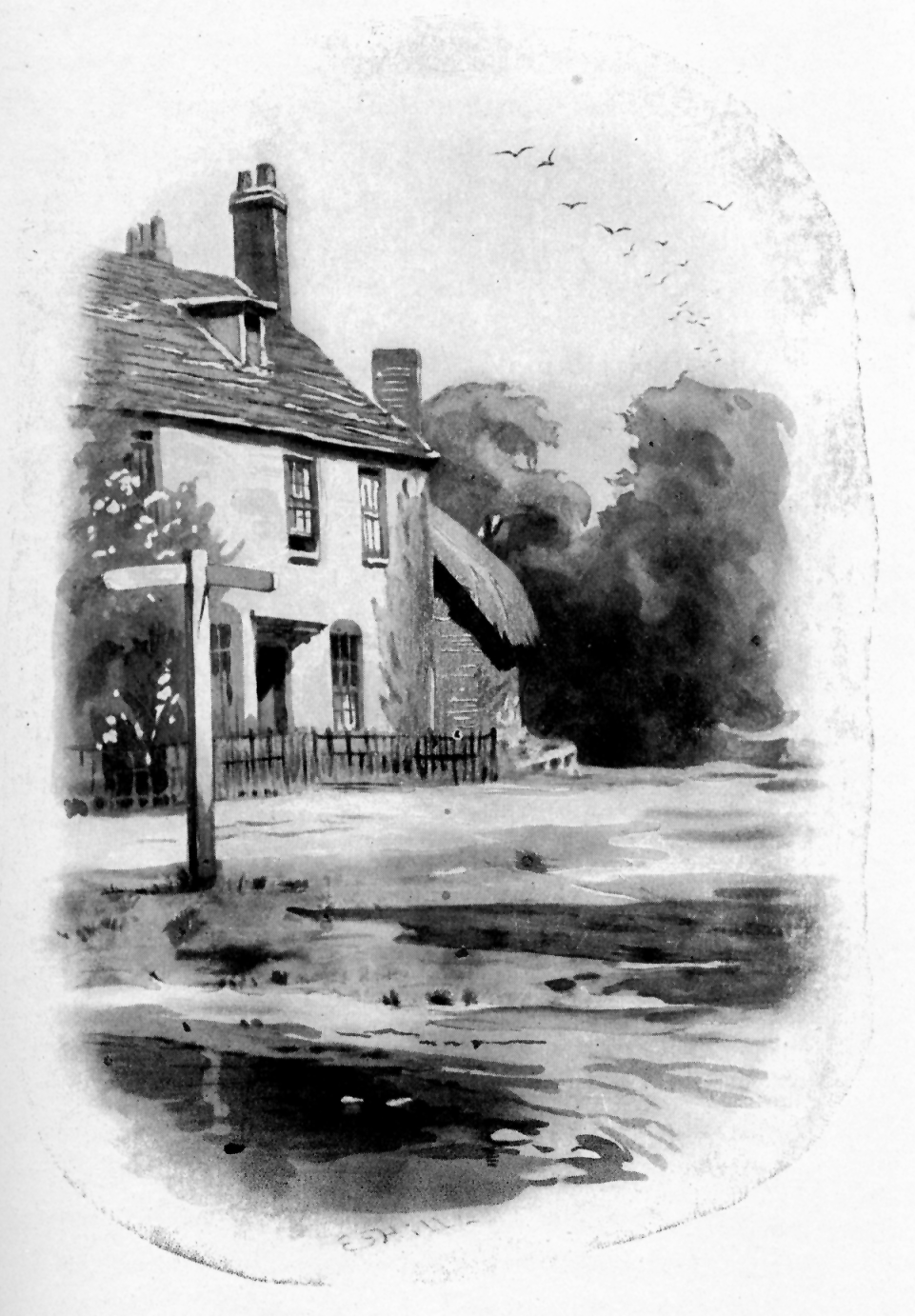
Chawton Cottage by Ellen Hill
The move to Chawton Cottage created a perfect storm of creativity and success for Jane. Thanks to Edward, she returned to the rural countryside she loved, and once again her talent and creativity flourished. First on her to-do list was to rewrite Sense and Sensibility. A publisher had not rejected this manuscript and she sensed its commercial value. After its modest success, she turned to her other novel, First Impressions, the family favorite which had languished unpublished. We have no way of knowing how often Jane revised this beloved story, which, like Sense and Sensibility, started out as an epistolary novel. What we do know is that the finished product, renamed Pride and Prejudice (published in 1813), was well received. The book retains its literacy rock star status to this day.
I have no doubt that George Austen’s unshakable faith in Jenny’s brilliance as an author contributed to her success. His gift was his consistent confidence and encouragement in nourishing her spectacular talent. Well done, George!
______
Articles from this blog:
- Baby Jane Austen’s First Two Years: Happy 235th Birthday Jane!
- Jane Austen’s Father: Reverend George Austen
Online Articles
Gibbs, C. (1986) Absent Fathers: An Examination of Father-Daughter Relationships in Jane Austen’s Novels (Persuasions #8. JASNA. PDF Downloaded 6/26/21: http://www.jasna.org/persuasions/printed/number8/gibbs.pdf
Sutherland, K. (2014) Female education, reading and Jane Austen, British Library. URL Downloaded 6/26/21: https://www.bl.uk/romantics-and-victorians/articles/female-education-reading-and-jane-austen
Books
Grey, J.D. (1986) The Jane Austen Companion (with A Dictionary of Jane Austen’s Life and Works by H. Abigail Bok (U.S.). Macmillan Publishing Company.
Lane, M. (1997) Jane Austen’s Family: Through Five Generations (Paperback reprint (U.K.) St. Edmundsbury Press, Ltd.
Hannon, P. (2007) 101 Things You Didn’t Know About Jane Austen: The Truth About the World’s Most Intriguing Literary Heroine (U.S.). Fall River Press.
Ivins, H. (2010) The Jane Austen Pocketbook Bible (1st ed. U.K.). Crimson Publishing.
Mingay, G & Sperling, D. (1981) Mrs Hurst Dancing And Other Scenes from Regency Life 1812-1823 (U.K.). Victor Gollancz Ltd.
Sullivan, M.C. (2007) The Jane Austen Handbook: Proper Life Skills from Regency England (U.S.). Quirk Books.
https://www.amazon.com/Hurst-Dancing-Scenes-Regency-1812-1823/dp/0312551290
